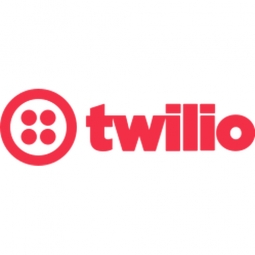Technology Category
- Networks & Connectivity - Gateways
Applicable Industries
- Cement
- Telecommunications
Use Cases
- Construction Management
- Infrastructure Inspection
Services
- System Integration
About The Customer
PhoneUnite is a company founded in 2013, with its headquarters in Kansas City, MO. The company offers small and medium-sized businesses a hosted PBX service, aiming to integrate the phone system's inbound and outbound calls. Their vision is to route calls to their customers' mobile phones, in line with the BYOD trend. However, they discovered that their customers also wanted traditional business phones, alongside lower communication costs. Therefore, they sought a solution that could satisfy these diverse needs while also future-proofing their communications infrastructure.
The Challenge
PhoneUnite, a company offering hosted PBX services to small and medium-sized businesses, faced a significant challenge in finding a scalable, pay-as-you-go communications provider to support their growing business. The co-founders, Henry Weber and Bryan Heitman, initially planned to route calls to their customers' mobile phones, aligning with the BYOD (bring your own device) trend. However, they discovered that their customers also desired traditional business phones, alongside lower communication costs. The challenge was to satisfy these customer needs while also future-proofing their communications infrastructure.
The Solution
To address this challenge, PhoneUnite decided to deploy SIP (Session Initiation Protocol), a signaling protocol that allows voice and data to be transmitted over the same channel. This solution simplified their communications infrastructure, reduced costs, and increased flexibility. Moreover, SIP offered the added benefit of future-proofing PhoneUnite's communications infrastructure, as it can handle any kind of media, allowing customers to converge all their communications onto a single platform. However, implementing SIP can be challenging. To avoid potential issues, PhoneUnite chose Twilio SIP. They were already familiar with Twilio's communications API platform as they were using it to connect to the traditional carrier network. They tested Twilio's SIP capabilities for inbound calls and switched over to outbound calling as soon as it became available.
Operational Impact
Quantitative Benefit

Case Study missing?
Start adding your own!
Register with your work email and create a new case study profile for your business.
Related Case Studies.

Case Study
System 800xA at Indian Cement Plants
Chettinad Cement recognized that further efficiencies could be achieved in its cement manufacturing process. It looked to investing in comprehensive operational and control technologies to manage and derive productivity and energy efficiency gains from the assets on Line 2, their second plant in India.

Case Study
Vodafone Hosted On AWS
Vodafone found that traffic for the applications peak during the four-month period when the international cricket season is at its height in Australia. During the 2011/2012 cricket season, 700,000 consumers downloaded the Cricket Live Australia application. Vodafone needed to be able to meet customer demand, but didn’t want to invest in additional resources that would be underutilized during cricket’s off-season.

Case Study
SKT, Construction of Smart Office Environment
SK T-Tower is the headquarters of SK Telecom. Inside the building, different types of mobile devices, such as laptops, smartphones and tablets, are in use, and with the increase in WLAN traffic and the use of quality multimedia data, the volume of wireless data sees an explosive growth. Users want limitless Internet access in various places in addition to designated areas.






